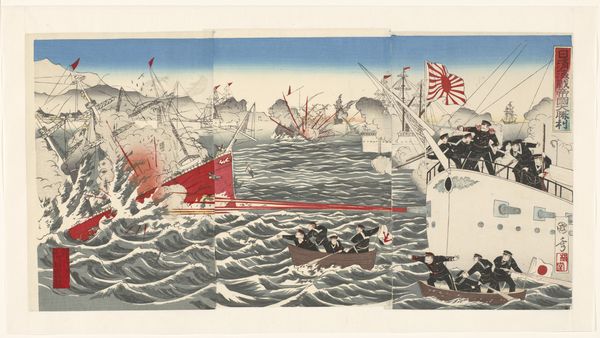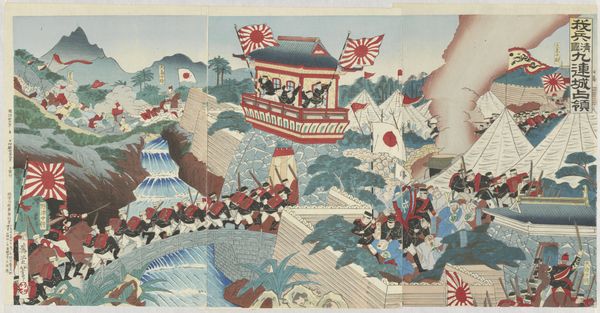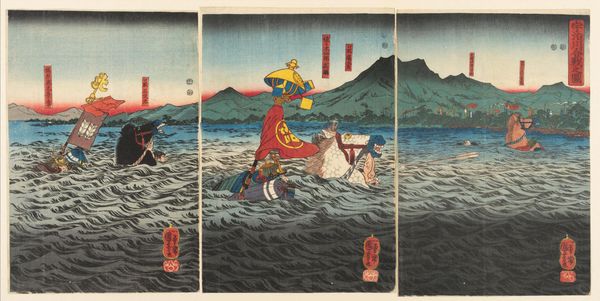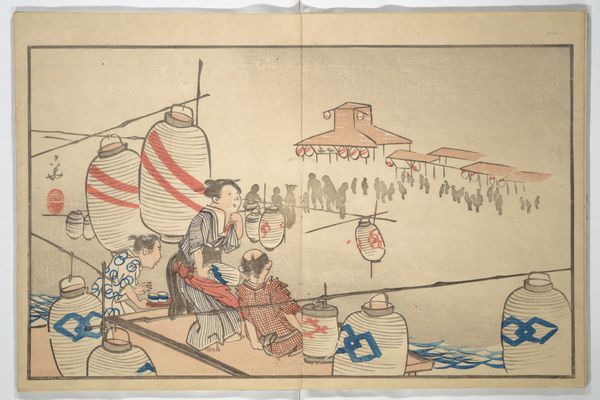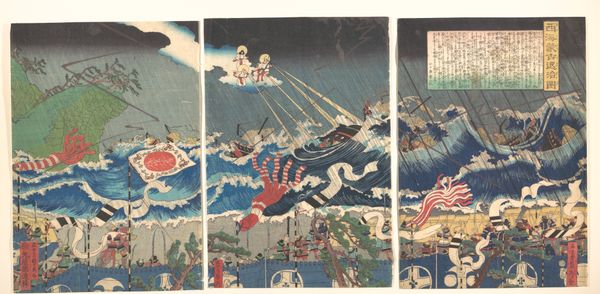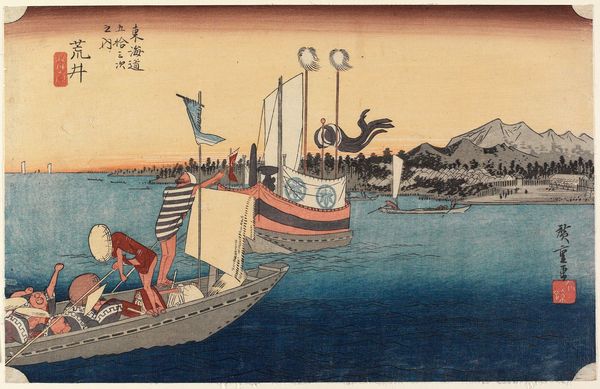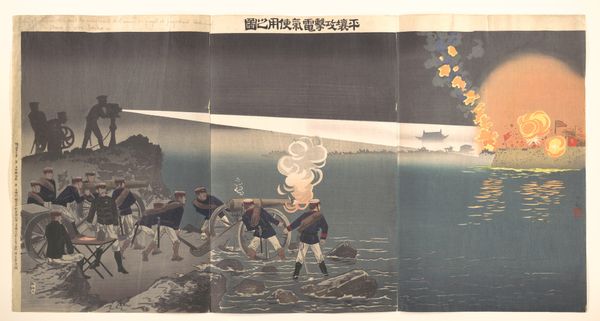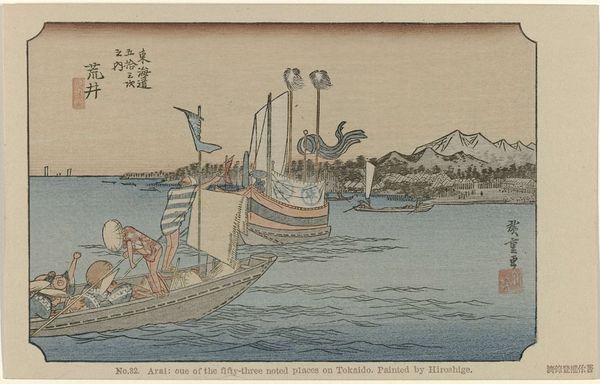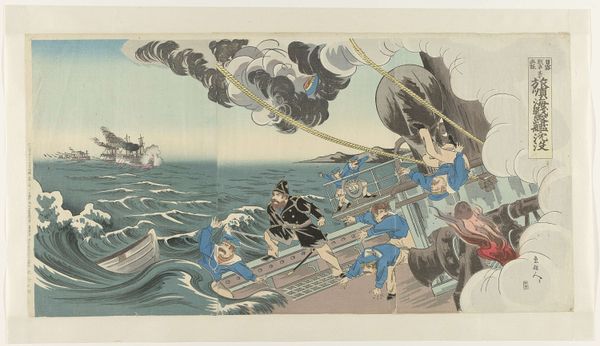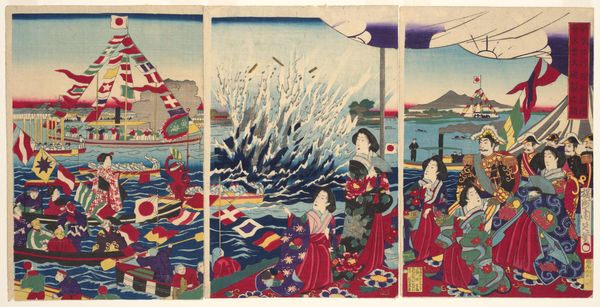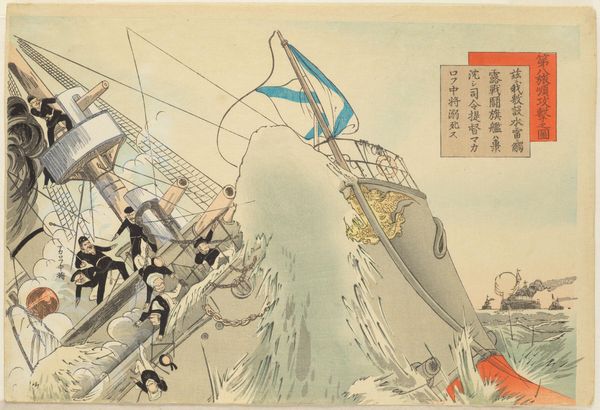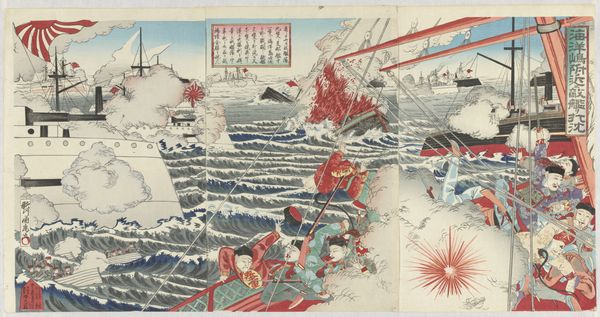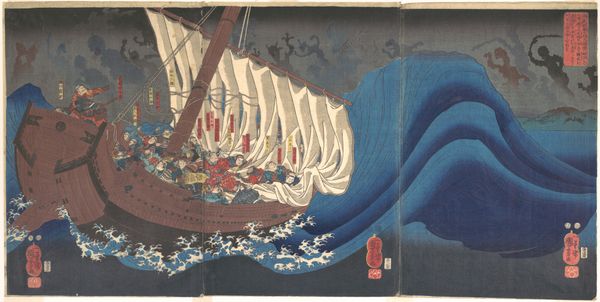
Gezicht op de Karasaki pijnboom terwijl Akechi Samanosuke Mitsuharu het meer overzwemt. Possibly 1899
0:00
0:00
Dimensions: height 361 mm, width 708 mm
Copyright: Rijks Museum: Open Domain
Curator: Oh, this… this shimmers! Look at those horses, bravely swimming, turning the water into some kind of aquatic ballet. It's daring, don't you think? Editor: It does possess a certain drama, yes. What we're seeing here is "Gezicht op de Karasaki pijnboom terwijl Akechi Samanosuke Mitsuharu het meer overzwemt," possibly from 1899, created by Kobayashi Kiyochika. It seems like a watercolor... a triptych, actually, with a scene of considerable tension playing out across three panels. Curator: Tension is absolutely the word! It’s all blues and reds, a limited palette doing such expressive work. The red flags, in particular, popping against the cool water, pull your eye right into the thick of the action. Any idea what’s going on? What’s with that blossom-like symbol? Editor: The blossom is, I believe, a stand-in for the symbolic weight of clan identity. Akechi Samanosuke Mitsuharu was a samurai of the Sengoku period… swimming, no doubt, for his life or his clan's survival. Kiyochika frequently played with themes of modernity versus tradition. He created quite a few works memorializing fading warrior culture against the backdrop of increasing modernization. The desperate swim then becomes something of a lament. Curator: A lament…yes, I get that. And the way he’s rendered, transparent almost, gives a spectral feeling, like he's fading away with the world he represents. Did you notice the reflections of the horses in the water, that rippling mirror image? It's lovely but slightly unnerving at the same time. It amplifies the sense of unease, doesn't it? Editor: Precisely. Reflection is tied to illusion, revealing hidden aspects. By showing the horses half-submerged, Kiyochika taps into a collective unconscious, alluding to historical continuity and transformation. Curator: So the painting isn't simply capturing an event. It's capturing the cultural weight *of* that event. Editor: Yes, precisely. Consider also the pines in the distant background. Ancient pines serve to create a temporal bridge connecting past struggles with an enduring landscape. A persistent motif of resilience, perhaps? Curator: Hmmm... resilience mirrored in this swim. Makes you wonder what we ourselves will endure, and what symbols our stories will leave behind. I'm glad I stopped here for a look, it adds a fascinating new dimension to an action painting!
Comments
No comments
Be the first to comment and join the conversation on the ultimate creative platform.
